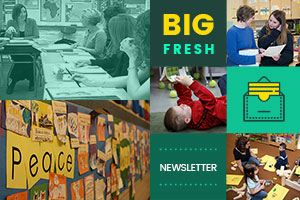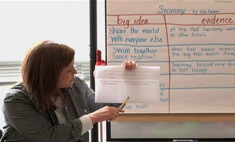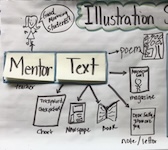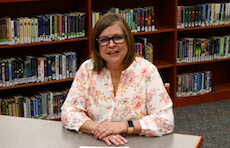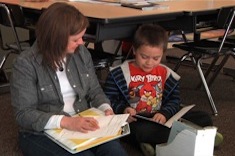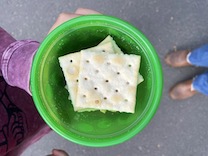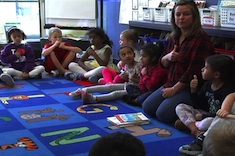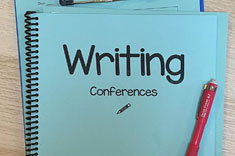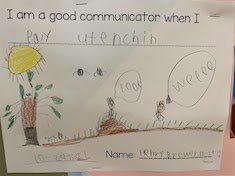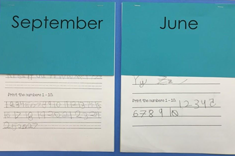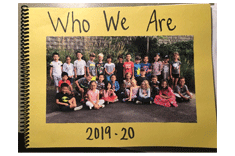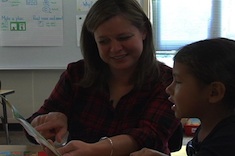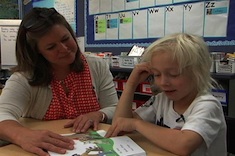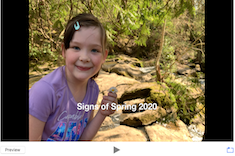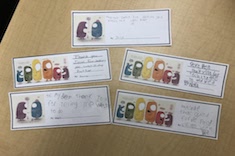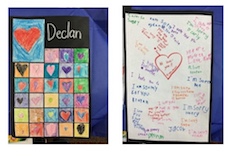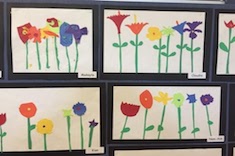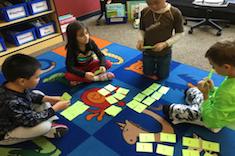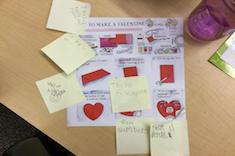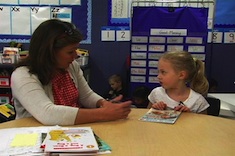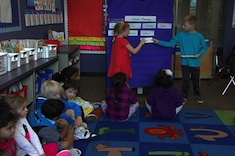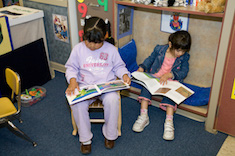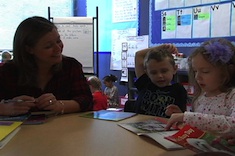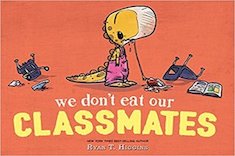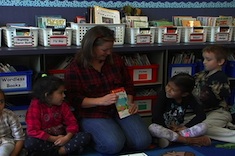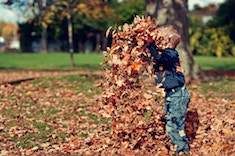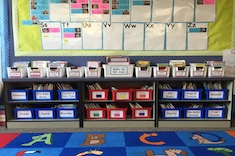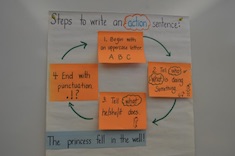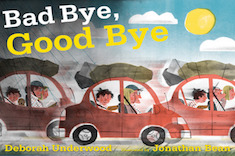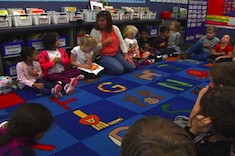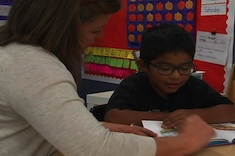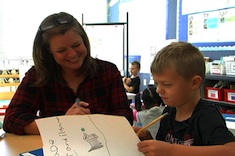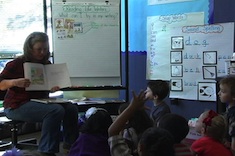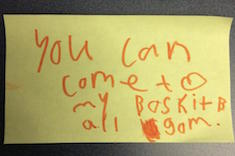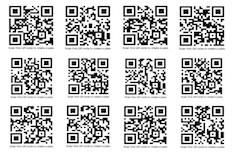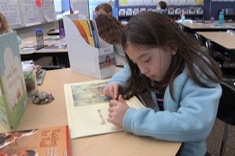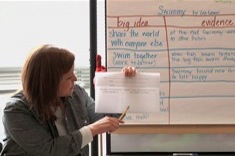Bitsy Parks
Bitsy Parks is a first-grade teacher in Beaverton, Oregon and an adjunct instructor at Lewis and Clark College in Portland, Oregon.
Latest Content
August 15, 2025: Positive Approaches to Change
This week’s newsletter is about ways to keep a positive attitude toward change.
An Ode to the Anchor Chart
In a world where anchor charts are becoming digitized and developed by curriculum publishers, Bitsy Parks reminds us of the power and importance of co-creating anchor charts with students. She outlines key steps and ways to adjust anchor charts to connect with students and improve engagement.
Community Circle
Bitsy Parks reminds us of the importance of taking time to talk, ask questions, and share thinking in a circle format. Community circle is a practice that strengthens an inclusive community.
Mentor Texts Elevate Readers and Writers
Bitsy Parks uses mentor texts to elevate her students as writers. Although mentor texts are included in many curriculum programs, Bitsy offers more opportunities for students to use mentor texts to strengthen their reading and writing lives.
Expecting Joy in the Classroom Library
Bitsy Parks shares the joy you can expect from the classroom library.
I’m an Everything Person!
Bitsy Parks writes about the connection between identity and engagement, offering small steps to help all students believe in themselves as learners.
Conferring Notebook Details
Bitsy Parks opens her conferring notebook and shares powerful ways to use conferring notes to differentiate instruction for students in reading and writing.
How Many? Counting Opportunities in Picture Books
Bitsy Parks shares the importance of counting and a booklist of picture books that lend themselves to counting opportunities.
Stay Sharp: Bitsy Parks
Bitsy Parks shares the importance of reading professionally to stay sharp.
Math Is Everywhere
Bitsy Parks shares an initial read aloud to encourage primary students to develop the ability to see math everywhere.
Spontaneous Text Sets
Bitsy Parks wanted to create an intentional read aloud routine that responded to student interests and needs as readers. She shares the way her responsive selection of books led to spontaneous (and powerful) text sets.
How to Begin a Community Circle
Bitsy Parks gives direction in beginning a community circle with primary learners.
Holidays: Where Do They Fit in the Classroom?
Bitsy Parks shares the inspiration and practical ways she celebrates and honors holidays from many cultures in her classroom.
The Best Advice for Keeping Students at the Heart of Lesson Plans
Bitsy Parks shares her best advice for lesson planning in a way that keeps the focus on students. She encourages finding joy in the planning process by observing them.
Intergenerational Booklist
Bitsy Parks shares the process of building a booklist to deepen the connections and synthesis of culture, family structure, and experiences. Use this booklist of 10 picture books to lead a powerful conversation in your classroom and empower young students to grow in their analysis.
Learning Joy
Bitsy Parks shares the story of a striving student, and pinpoints the elements of a rich workshop classroom that supports finding joy in becoming literate.
The Choice Literacy Book Club Discusses Apple and Magnolia
The Choice Literacy Book Club discusses Apple and Magnolia.
Picture of the Week
Bitsy Parks shares a Picture of the Week routine that builds real-life literacy skills, and documents and celebrates important moments throughout the school year.
A Three-Part Conferring Kit
Bitsy Parks shares a simple three-part conferring kit that will position anecdotal notes to guide instruction.
What Is Communication? A Mini-Inquiry Project and Booklist
Bitsy Parks leads her first-grade class in a study about communication to strengthen their socially distanced and muffled-by-masks community. Included is a booklist.
Four Keys to Making Workshop Work
Bitsy Parks reminds us of four key components of running a workshop and offers advice for making workshop work.
Overplayed Mentor Texts
Bitsy Parks outlines how to select mentor texts in order to have more ownership over the lesson and engage students.
Mother Language Day and Tradition Presentations
Bitsy Parks shares special events that help students widen their scope of acceptance and appreciation for the differences among us.
A Complete Circle: Identity, Growth, and Community
Bitsy Parks offers key end-of-the year activities that allow students to reflect and notice their identities, growth, and community as readers and writers.
Celebrating Writers Podcast with Bitsy Parks
Bitsy Parks discusses celebrating writers on the podcast.
Class Books Build Readers, Writers, and Community
Bitsy Parks shares the ways in which class books help students work as readers and writers, as well as build a community.
Writing Joy: A Publishing Celebration
Bitsy Parks shares the celebration within the publishing process. Learn to find the joy in uplifting young writers’ approximations by sharing their works with a larger audience.
Examining Book Choices with Awareness of Bias
Bitsy Parks takes into account her consideration of implicit biases and examines her classroom library and read aloud choices with urgency and excitement.
Book Series Joy
Bitsy Parks shares the way a series study enriches the reading lives of students and serves as an intervention to help readers grow.
First-Grade Reading Conference: Coaxing and Supporting
Bitsy Parks helps first grader Sophia tackle the tough job of making meaning and decoding words early in the year with lots of encouragement and good humor.
Using Pictures to Decode in First Grade
Bitsy Parks helps first grader Zac work on his decoding skills by using a fun picture book.
Using Photographs in Remote Learning Communities
Bitsy Parks shares how she and her first-grade students used photography to bridge the distance between home and school this spring, learning lessons she is using this fall in remote learning contexts.
Routines for Building Gratitude
Bitsy Parks finds even the dreariest days in her first-grade classroom are infinitely more enjoyable because she’s built in routines for expressing gratitude.
First-Grade Conference: Repeated Phrases in Writing
Bitsy Parks confers with Michael about his gingerbread man writing. She encourages him to use a repeated phrase in the writing, echoing a whole-class lesson on repeated phrases.
First-Grade Writing Share: Highlighting Craft
Bitsy Parks leads a writing share early in the year, presenting three student examples of writing and highlighting different aspects of writer’s craft linked to minilessons.
Everyday Celebrations and Traditions
Bitsy Parks shares how she builds a learning community with displays and traditions that celebrate families.
The Power of Teaching Journals
Bitsy Parks finds inspiration for her teaching journal in the work of Debbie Miller. She explains how she uses her journal daily, and how it has evolved over time.
Planting Rainbows
Bitsy Parks shares how she adapts her favorite first-grade spring literacy project for remote learning.
The Good Part of Tech
Bitsy Parks shares how she integrates technology into her workshops with first graders in a way that is simple, effective, and natural.
Quick and Easy Word Study Groups in First Grade
Bitsy Parks shares some of her favorite strategies for quick and meaningful word work groups in her first-grade classroom.
A Quick How-to Writing Unit in First Grade
Bitsy Parks uses the short stretch before the holidays for a quick and fun how-to writing unit with her first graders.
Conferring to Connect: First-Grade Reading
Bitsy Parks confers with first grader Ella about the Brown and Pearl book series, and then listens to Ella read. She closes the conference by encouraging Ella to make more personal connections to books.
First-Grade Read Alouds During Transitions
This brief video is an excerpt from a read aloud in a first-grade classroom during morning snack break. You’ll notice Bitsy Parks uses a projector so students can eat at tables and desks, and makes quick connections to other books.
Student Greeting
Students in the first-grade classroom of Bitsy Parks lead a morning greeting at the start of the day. It’s a quick activity to check attendance, build reading skills, and help students learn the names of classmates in the community.
Slowing Down
Bitsy Parks comforts a crying child after lunch, and realizes how essential it is to continually slow down the fast pace of learning in her classroom.
Stretching Writing in First Grade with Details
Bitsy Parks makes the home-school connection with first grader Grace early in the year as she writes about her birthday party.
Crafting the Basics: First-Grade Writing Conference
Bitsy Parks confers with Aubrey early in the year, using books from whole-class lessons as a scaffold for understanding key text elements like title, author, and illustrations.
Clapping Syllables Routine in First Grade
Bitsy Parks works with her first graders early in the year to teach them the basics of how words are constructed, by clapping through syllable counts.
Moving Beyond Pokemon: Conferring with Clover
Bitsy Parks works with a first grader stuck on writing about Pokemon characters. She uses other writing from Clover to nudge her to try something new.
Building Routines
Bitsy Parks teaches the foundations of first-grade classroom life through minilessons early in the year.
What Does It Mean to Read?
“I read 35 pages!” An elated student deflates Bitsy Parks in her first-grade classroom. By mid-fall she is alarmed at students’ responses to their reading in the whole-group share—they are all about quantity, with no thinking or reflection. She uses modeling and careful questioning to foster more thoughtful reader response.
Levels and What’s Appropriate
“How do you know what level they have selected?” a visitor asks Bitsy Parks as she observes during a first-grade independent reading period. “I don’t,” Bitsy responds, and explains why it is a beautiful thing.
Read Alouds to Start the Year in First Grade
Bitsy Parks selects read alouds for the first weeks of school for many different purposes, from building community to helping her first graders navigate the classroom library.
First-Grade Reading Share: Focus on Conferring and Strategies
Bitsy Parks uses reading share time early in the year to describe and summarize the work in two conferences to help students learn how conferring, independent reading time, and strategy practice work. One of the books used in a conference is from a recent read aloud.
Fall Fluster
Bitsy Parks is stressed from trying to “cover” all the lessons in the first required reading unit of the year with her first graders. She takes a deep breath and decides to integrate more of her own lessons into her instruction.
Enticing Young Readers: First-Grade Group
Bitsy Parks helps a small group of first graders engage with the library early in the year by introducing a series with companion stuffed animals.
Summer Reading
Bitsy Parks reflects upon her own not-so-successful experiences as a parent in getting her four children to read during the summer months. She uses these parenting lessons to help students take the initiative for summer reading by writing down commitments and goals in her first-grade classroom.
Weeding a First-Grade Library
Bitsy Parks has a simple seven-step process for a hard day’s work of weeding out her first-grade classroom library.
How to Write a Sentence
Bitsy Parks realizes charts will help her first graders craft sentences. She shares how her sentence writing charts have changed over time.
End-of-Year Read Alouds
Bitsy Parks explains how the ending weeks of read alouds in her first-grade classroom are designed to celebrate learning and shared experiences from the entire year.
Goals to Habits in First Grade
Bitsy Parks finds goals aren’t enough for her first-grade students—real growth requires that the goals eventually become habits. She develops a process mid-year to help children refine their goals step-by-step.
First-Grade Reflections: Looking Back to Move Forward
Bitsy Parks discovers that the best way to relaunch literacy workshops in January after holiday break is to have her first graders reflect on and celebrate what they learned in the fall with personal anchor charts.
First-Grade Minilesson: Repeated Phrases
Bitsy Parks uses mentor texts and her own writing in a minilesson on how her first graders might use repeated phrases in their writing for more impact.
First-Grade Reading Share: Connections
Bitsy Parks helps her first-grade students complete “thumb reflections” on making connections in reading early in the year by modeling connections from three conferences in a whole-class share session.
First-Grade Minilesson: Tricky Words
Bitsy Parks presents a minilesson on figuring out tricky words by recounting a student's strategy from a recent reading conference, using it to begin an anchor chart.
Connecting Reading and Thinking Minilesson
Bitsy Parks uses read alouds from earlier in September to teach the key building block of comprehension—connections.
Connecting to Text: First-Grade Conference
Bitsy Parks confers with first grader Leo early in the school year, reinforcing the basic principle of making connections to text while reading.
Celebrating and Nudging: First-Grade Writing Conference
Bitsy Parks takes time to celebrate first grader Colson’s finished writing, even as she nudges him to try a technique shared in the day’s minilesson.
First-Grade Minilesson: Reading Like Writers
Bitsy Parks teaches her first graders early in the year how to read like writers, highlighting examples from favorite mentor texts.
Building Excitement for Book Awards
Bitsy Parks finds building excitement for book awards works in tandem with generating enthusiasm for reading in her first-grade classroom.
First-Grade Conferring: A Two-Word Picture Book
Bitsy Parks shows how even the simplest picture book can lead to powerful conferring. In this example, a first-grade English language learner is reading a picture book that uses only two words in the text.
Starting the Day with Literacy
Bitsy Parks shares how she starts the day with literacy in her first-grade classroom.
Reminder Notes
Bitsy Parks teaches her first graders to write sticky note reminders throughout the day, and is delighted by the learning and community building that ensues.
Increasing Read Alouds in the Primary Grades
Bitsy Parks describes her process over the years in increasing both the quality and quantity of read alouds in her first-grade classroom.
Quick Reading Reflection in First Grade
Bitsy Parks has her first graders complete a quick reading reflection before a share session early in the school year.
Gradual Release of the Library
Bitsy Parks explains how she designs her first-grade classroom library for “gradual release” throughout the school year in a way that allows students to build book-browsing skills.
Bringing Writers’ Voices Home with QR Codes
Bitsy Parks has her first-grade students record their writing as part of a regular workshop and assessment routine, and then uses QR codes to share the recordings with families and the larger community.
Reading Workshop Routines in First Grade
Bitsy Parks explains the routines and procedures in her first-grade reading workshop.
Big Idea: First-Grade Lesson
Bitsy Parks introduces her first graders to the concept of theme.
Wyatt’s Running Record
Bitsy Parks completes a running record with first grader Wyatt as part of our running record series.
Running Record: Kaenon
Bitsy Parks completes a running record with first grader Kaenon.
Jillian’s Running Record
Bitsy Parks completes a running record with first grader Jillian. This is part of our new running records series.
Running Records: Rationale and Procedure
Bitsy Parks explains her procedures for completing running records in her first-grade classroom. This is the first installment in a video series on running records.
In-the-Moment Word Study
We would all agree that there is a place for structured phonemic awareness and phonics lessons in the school day, and there is a place for language play and fun! Bitsy Parks shares some of her favorite in-the-moment, highly engaging word study experiences in her first-grade classroom.
Browse Content By
Type
Category
- Assessment Tools
- Big Fresh Archives
- Booklists
- Choice Numeracy
- Classroom Design
- Common Core
- Community Building
- Conferring
- Content Literacy
- Digital Literacy
- English Language Learners
- Equity
- Family Relations
- Free Samples
- Guiding Groups
- Leadership
- Literacy Coaches
- Mentor Texts
- Minilessons
- New Teacher Mentors
- Podcasts
- Poetry
- Quote Collections
- Reading Strategies
- Self Care
- Struggling and Striving Learners
- Talking and Listening
- Teacher Study Groups
- Teaching Reading
- Teaching Writing
- Word Study and Vocabulary
Author
- Melissa Quimby
- Nawal Qarooni
- Gwen Blumberg
- Julie Cox
- The Lead Learners
- Hannah Tills
- Josie Stewart
- Ruth Metcalfe
- Mallory Messenger
- Becca Burk
- Jodie Bailey
- Vivian Chen
- Mary Brower
- Tiffany Abbott Fuller
- Stephanie Affinito
- Ruth Ayres
- Leigh Anne Eck
- Heather Fisher
- Shari Frost
- Julie Johnson
- Suzy Kaback
- Gigi McAllister
- Shirl McPhillips
- Melanie Meehan
- Cathy Mere
- Debbie Miller
- Tara Barnett and Kate Mills
- Tammy Mulligan
- Dana Murphy
- Bitsy Parks
- David Pittman
- Brenda Power
- Heather Rader
- Matt Renwick
- Mandy Robek
- Christy Rush-Levine
- Gretchen Schroeder
- Jen Schwanke
- Brian Sepe
- Katherine Sokolowski
- Stella Villalba
- Jennifer Vincent
Grade Level
Choice Literacy Membership
Articles
Get full access to all Choice Literacy article content
Videos
Get full access to all Choice Literacy video content
Courses
Access Choice Literacy course curriculum and training

